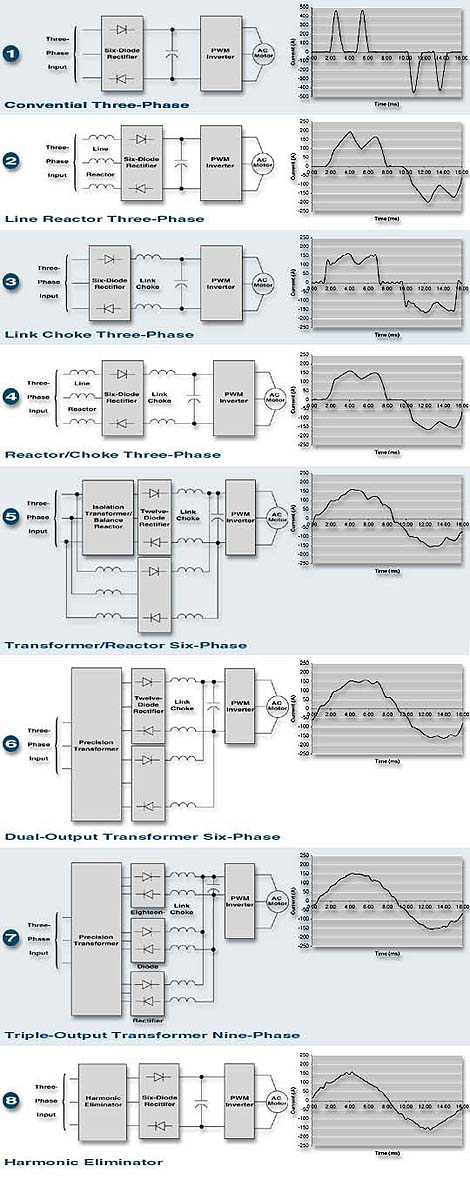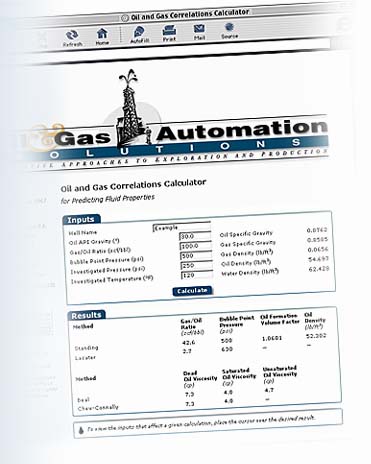|

 Controlling Harmonics with Variable-Speed Artificial Lift Drives Controlling Harmonics with Variable-Speed Artificial Lift Drives
by Bill Hammel vice president, engineering
At the 2005 ESP Workshop, held April 28-29 in Houston, there were six papers that referenced the problems of power-line harmonics due to the variable-speed drives (VSDs) used to control ESPs. Three of those papers (Field Comparison of Adjustable Speed Drive Technologies for Use on Submersible Pumps by Turner, LeDoux, and Salmas; Surface Electrical Reliability and Efficiency Improvements in Cravo Norte by Morales and Gomez; and ESP Power Quality Check: Field Case Study by Gohary, Al-Bimani, Al-Mahrouqi, Al-Busaidy, Ellithy, and Metwally) dealt almost exclusively with power-quality issues.
The following information on the various methods of controlling electrical harmonics may be useful to users of VSDs for operation of their artificial lift pumps.
Variable-Speed Drive Types
AC drives are generally based on pulse-width modulation (PWM) of a DC bus voltage to control the flow of power to an AC motor. The source of this DC bus voltage is generally a three-phase (six-pulse) rectifier (see Figure 1).
Power line quality can be improved by the addition of a line reactor to smooth the input current (Figure 2), a link choke to filter the rectifier output to the DC bus (Figure 3), or both (Figure 4). Further improvement can be made by the use of an isolation transformer, balancing line reactor, and additional bridge rectifier to operate in a six-phase (12-pulse) configuration (Figure 5).
Transformers can be precision wound to provide six-phase (12-pulse) or nine-phase (18-pulse) operation (Figure 6 and Figure 7). A harmonic eliminator can be used to provide nearly complete cancellation of harmonic current (Figure 8) similar to that achieved with 18-pulse systems.

Power Quality
Power line quality can be defined in terms of power factor and harmonic currents.
Power Factors
Total power factor is made up of both displacement and distortion components. Displacement power factor is the phase shift between line voltage and current. With a displacement power factor of unity, the current is exactly in phase with the voltage and the transfer of power is optimal. On the other hand, at zero power factor, no power is delivered even though there may be large circulating currents in the power line.
Harmonics
Harmonic currents are those that deviate from a pure sine wave and are generally expressed as a percentage of the fundamental current or as a distortion power factor. The percentage of harmonic current is generally referred to as Total Harmonic Distortion (THD).
High harmonic currents cause unfavorable distortion power factor, poor energy efficiency, and voltage distortion that may affect other equipment. An ideal system would have unity power factor and zero harmonic currents.
|
 Controlling Harmonics with Variable-Speed Artificial Lift Drives
Controlling Harmonics with Variable-Speed Artificial Lift Drives

 Lasater Correlation
Lasater Correlation